Local News
Gray Academy pivots once again to “Gray Away” during provincially mandated week of remote learning
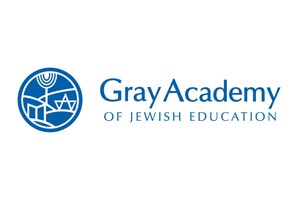 By BERNIE BELLAN With the decision by the provincial government to require online learning in all classrooms for students from K-12 from January 10-14, Gray Academy was well positioned to implement what it began to refer to as “Gray Away” when it was first introduced in May 2020. As well, the school has also taken steps to provide all parents of students in JK-6 with test kits that the parents are being asked to administer every three days beginning January 16.
By BERNIE BELLAN With the decision by the provincial government to require online learning in all classrooms for students from K-12 from January 10-14, Gray Academy was well positioned to implement what it began to refer to as “Gray Away” when it was first introduced in May 2020. As well, the school has also taken steps to provide all parents of students in JK-6 with test kits that the parents are being asked to administer every three days beginning January 16.
‘“Gray Away” was reintroduced this past week, from kindergarten to Grade 12,” Lori Binder, Head of School at Gray Academy, said during a phone interview.
“Our junior kindergarten students have been able to remain on site,” Lori added, “since JK falls under early learning child care.”
As well, similar to all other schools in the province, Lori noted that “we are supporting children of critical service workers or those students who need supports. We’ve had about 80 kids in the building even during Gray Away. Most of those kids have been K-6, along with junior kindergarten – and just a sprinkling in the high school.”
“All teachers have been on site, so remote learning was taught from the school…Even though we were made aware [remote learning] was a possibility, before vacation was over, staff got together in a Zoom meeting to be prepared for the transition.”
As well, Lori added, “prior to break we sent stuff home with kids because Omicron was spreading – so at least we were able to prepare most of our students to have their belongings they needed for learning.”
Something else that the school will be able to give students is rapid test kits for all students (including those in JK) up to Grade 6. Lori noted that the province had supplied the school with sufficient quantities (five tests per student) of rapid test kits for all students in K-6 to be tested every three days. With school set to resume in person on January 17, parents are to pick up the test kits on Sunday, January 16.
As well, Lori noted, “We were given a supply of tests from BB Camp” that had been left over following the summer session of that camp. Those tests were given to parents and have been used for students in Junior Kindergarten, so that they, could also be tested every three days. The test kits were also made available for Critical Care Workers whose children were in school the week of January 10-14 for in person learning.
Parents of all students in JK-6 are being asked to administer tests to their children prior to the resumption of in person learning as an additional layer to mitigate the risk of the spread of COVID upon their return. With five rapid tests for each student to take every three days, this will help for the first two weeks back after the long break from in person learning.
As far as test kits for kids in 7-12 are concerned, Lori said the province did not provide schools with kits to send home as high school-aged students are eligible to be vaccinated. At Gray Academy, students aged 12 and up are all fully vaccinated. (Still, in light of the Omicron variant infecting fully vaccinated individuals, I wonder whether the province might now be giving consideration to giving students who may have received two vaccines test kits as welll? Anyone under 18 is not eligible for a booster shot in Canada, although they could be in the U.S.)
I asked Lori when was the last time Gray Academy had been forced to implement remote learning?
“It was May and June of 2021,” she answered.
When Gray Academy first introduced “Gray Away” in March 2020, however, it was for all students, including Junior Kindergarten. Since then, there’s been the clear realization that “learning remotely is not effective for three and four-year-olds,” Lori explained.
As it was when remote learning was first introduced almost two years ago, classes are structured similar to how they would be in person, with breaks structured into schedules. “In elementary it’s tweaked just a little bit so that there’s more time to move around between classes,” Lori added.
I wondered, when school began in the fall, whether Gray Academy was still maintaining the strict protocols that had been in force all last school year, i.e., social distancing, students remaining in cohorts, no movement of students between classrooms (with teachers moving instead from class to class)?
Lori said that Gray Academy had been adhering to stricter rules than were nominally dictated by the province. When school began in the fall, she explained, “schools were in ‘Yellow’; we were operating a little closer to ‘Orange. For example, our staff were in medical grade masks since September. Our students in elementary have been cohorted and had two metres between their desks.
“In high school this year, because all students were fully vaccinated (which, we noted back in September, made Gray Academy one of only two high schools which required that all students be vaccinated, the other being the University of Winnipeg Collegiate) – in late November it was the first time students began to move around the school again. That was an amazing, refreshing thing for our high school students – being able to move from class to class. For instance, they were actually able to take biology in the biology lab, rather than the biology teacher coming to them.”
It was around the same time that “the library reopened for the first time, singing started again – with masks on. That was before Omicron landed in Manitoba.”
I wondered whether there had been any cases of COVID in Gray Academy since the pandemic took hold here back in March 2020?
“From March 2020 to December 22, 2021, we had one case,” Lori answered.
“Then the school closed on December 22 for winter break; that’s when Omicron was sort of bubbling, and Friday, December 24 we started to receive reports of cases among individuals who had been at school. Even though we were on break we wanted to follow the protocols and communicate with our families. We reported to the (appropriate) grade and to the school that there was a positive case. Between December 22 and 10 days following, we reported on 15 cases after school closed which, in light of Omicron, is not surprising.”
“There was no indication of spread among those cases. They were sprinkled here and there, mostly in elementary, which again is not surprising, since our high school students and all staff are fully vaccinated.”
“Our goal was to keep our school community healthy by informing families of any potential exposure.”
I wanted to once again remind readers what the overall consequence was of requiring that all students aged 12 and up be vaccinated prior to the start of the school year in September, so I asked Lori whether there had been any further developments insofar as parents pulling their children from the school because they didn’t want to have them vaccinated.
Lori responded that the figures she reported to me back in September had remained the same: A total of only 11 families with 20 children who had been enrolled in Gray Academy last school year had withdrawn their children from the school as a result of the vaccination requirement.
Further, Lori reported that there had been complete compliance among staff with regard to getting vaccinated.
Given the uncertainty about students returning to in school education, I suggested to Lori that the most she and her staff can do is plan five days at a time.
“That’s right,” she said. “Five days at a time.”
Local News
Vickar Family cuts ribbon on new Tova Vickar and Family Childcare Centre
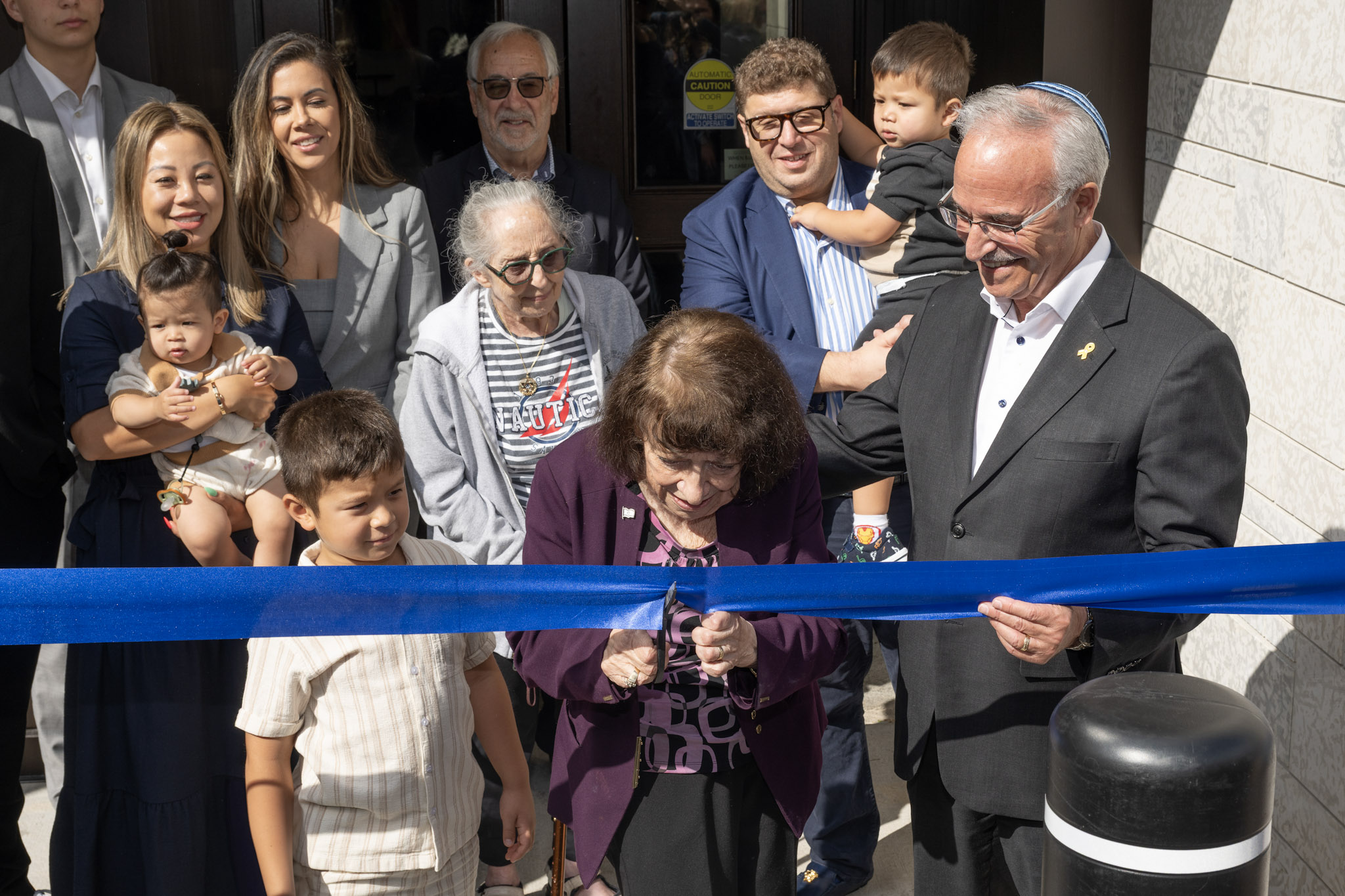
By MYRON LOVE In the words of Larry Vickar, the Shaarey Zedek’s successful Dor V’ Dor Campaign “is not only a renewal of the synagogue but truly a renewal movement of Jewish life in our community.”An integral part of that renewal movement was the creation of a daycare centre within the expanded synagogue. On Monday, June 23, Larry and Tova Vickar cut the ribbon, thereby officially opening the Tova Vickar and Family Childcare Centre in the presence of 100 of their family members, friends and other supporters of the project.
The short program preceding the morning ribbon-cutting began with a continental breakfast followed by a welcome by both Fanny Levy, Shaarey Zedek’s Board President, and Executive Director Dr. Rena Secter Elbaze. In Elbaze’s remarks, she noted that Larry and Tova wanted their family (including son Stephen and family, who flew in from Florida) and friends at the event to celebrate the opening of the Tova Vickar and Family Childcare Centre, “not because of the accolades, but because, as Larry put it, he hopes that their investment in the congregation will inspire others to do the same.”
“When Larry and I spoke about what this gift meant to him and the message he wanted people to take away,” she continued, “I couldn’t help but connect it to the teachings of Reb Zalman Schachter-Shalomi whose book – Age-ing to Sage-ing – changes the whole way we look at the concept of ageing and basing it on our ancestral teachings.”
She explained that his concept of “Sage-ing” is based on three key ideas – Discover your meaning and purpose; accept our mortality and think about the legacy you want to leave.
“Larry spoke about these exact concepts when we met,” she said.
Elbaze also noted the presence of Shaarey Zedek’s newly-arrived senior Rabbi Carnie Rose, former Rabbi Alan Green, and area MLAs Mike Moroz and Carla Compton.
Larry Vickar expressed his great appreciation for all those in attendance. “Tova and I are deeply moved to stand here with you today for this important milestone in our community”, he said. “We are grateful to be surrounded by all of you, the people we care about, our family and friends… you who have touched our lives and played some part in our journey.”
Local News
New Israeli restaurant opens in River Heights

By BERNIE BELLAN (July 6, 2025) It’s been a long time since our community has been able to welcome the opening of a restaurant that specializes in Israeli food.
That void is now filled with the opening of The Green Falafel, at 1833 Grant (corner of Centennial – next to the Subway), which opened its doors (to huge crowds) on Monday, July 7.
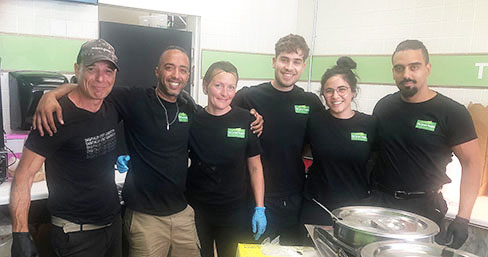
(owners Ariel & Elena Maudi second and third from left)
The restaurant is the fulfillment of a dream long held by the husband and wife team of Ariel and Eden Maudi, who have been living in Winnipeg the past 11 years.
Ariel, who was born in Israel and grew up in Beer Sheva, says that he worked in telecommunications in Ramat Gan for several years. He adds though that he had always dreamed of owning his own falafel stand in Israel, but life was difficult there and he decided to come to Canada as a tourist to see whether there were any opportunities here for him, Eden and their two young children.
Eden, who was born in Russia and moved to Israel with her family in 1996, stayed behind with the two kids, who were both pre-schoolers, while Ariel tested the waters in Canada first.
Ariel says he came to Canada as a tourist in 2013. His first stop was in Toronto, where he acquired his 1st class driver’s license. At the end of 2013 he moved to Winnipeg where he began working as a truck driver. Soon he found himself employed as a successful sales person at Vickar Nissan where, he says, he once achieved the status as the top car sales person in Canada. After working at Vickar Nissan for a number of years, Ariel began working as an installer for Bell MTS.
Meanwhile, Eden began working at a Walmart, later at the Costco on Regent.

But, when the opportunity to move into a space that had been previously occupied by another restaurant, but which had closed, became available, Ariel and Eden decided to open their own Israeli restaurant in an area that hadn’t seen Israeli food served since the controversial closure of Bermax Café in 2019.
The Maudis say that they will be serving a variety of Israeli dishes – all vegetarian, and that they will be fully kosher.
The “green” in Green Falafel, by the way, Ariel Maudi explains, comes from the cilantro and parsley that are added to the chickpeas. In addition, their pitas will be coming from Israel and will be baked fresh daily.
The Green Falafel is open from 10-8 Sunday – Thursday and 10-4 on Friday. (Closed Saturday).Delivery will be available through Uber Eats and DoorDash.
Call 204-557-7837 for information.
Local News
Previews of shows with Jewish performers at this year’s Fringe Festival July 16-27

For show dates and venues go to winnipegfringe.com
By BERNIE BELLAN As has been our custom for many years now we try to find shows that have either Jewish performers or themes that would have particular appeal for Jewish audiences. Many of the Jewish performers at this year’s festival have been here before, but several are new. In no particular order here are blurbs about the shows we’ve found that fit the criteria I’ve just described. (By they way, if we’ve omitted a show that should be included in our list there’s plenty of time to get added to this post. Just drop me a line at jewishp@mymts.net.)

You’ve Been Served: A One-Woman Show About Divorce, Cults, and Coming of Age at Midlife
Noemi Zeigler
You are hereby summoned… to laugh, cry, and maybe belt out a Streisand number in solidarity. You’ve Been Served is a raw and riotous solo comedy by writer-performer Noemi Zeigler. It all begins when Noemi is served divorce papers on top of a garbage bin lid while taking out the trash—an undignified start to a full-blown midlife unraveling.
At 50, still clinging to her dream of becoming a singer, she falls under the spell of a music producer slash self-help guru, joins a spiritual cult, and, instead of landing a record deal, she lands in jail. Behind bars, with help from her long-buried inner child, she begins to reclaim her voice and her power. Turns out, dreams really do come true—just not the way she expected.
The show features vividly drawn characters—including a manipulative cult leader, a toxic ex-husband, and a jail guard named Roach who shares Noemi’s obsession with the fashion of Charlie’s Angels (the ‘70s TV version, of course.)
With salsa dancing, twerking, and a belting rendition of Don’t Rain on My Parade, Zeigler dives into abandonment, reinvention, and self-rescue. As she confronts perimenopause, she discovers it’s not the end—it’s the new puberty. The show touches on grief, sexuality, and spiritual confusion, but Noemi’s childlike optimism asks: What if your breakdown is actually your breakthrough?
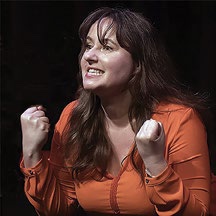
You’re good for nothing… I’ll milk the cow myself
Written & Performed by Natacha Ruck
France, 1981: The first socialist president is about to be elected and young Natacha is ready to implement her own political platform. But first, she has to take down the schoolyard bully,emasculate the rules of French grammar and make off with grandmother’s chocolate.
If you think you know the limits of Jewish mothers, evil grandmothers and transcontinental lovers, meet Natacha Ruck’s family. This true tale of three generations of women, facing three world wars, is equal parts hilarious, shocking and zany.

A One Human Being, Potentially Comedic Performance of Beauty and the Beast NEW WORK!
Written & Performed by Alli Perlov
Be our guest! Local high school drama teacher Alli Perlov is back for a tale as old as time. Can she sing? Not really. Can she act? That’s debatable. Will you laugh? Oh… probably.
Perlov plays dozens of characters, some human, some animal, and many objects, in a comedic exploration of Beauty and the Beast.
In an homage to this brilliant musical adventure, through witty commentary and unstoppable energy, Perlov aims to entertain an audience that isn’t forced to be there like her students.

Hockey Sticks and Beaver Pie
Written & Performed by Melanie Gall
Take a trip around Manitoba. From the 30,000 ft. St. Adolphe snow maze to the Narcisse snake dens! After all, where else holds both the title of Slurpee Capital of the World and the Guinness Record for the most people simultaneously howling like wolves?
Deanna Durbin, Terry Jacks and Burton Cummings are among the many homegrown stars, and Hockey Sticks features their music along with original songs and the stories that make this province unique.
Starring Melanie Gall from past shows Piaf & Brel, Ingenue and Toast to Prohibition
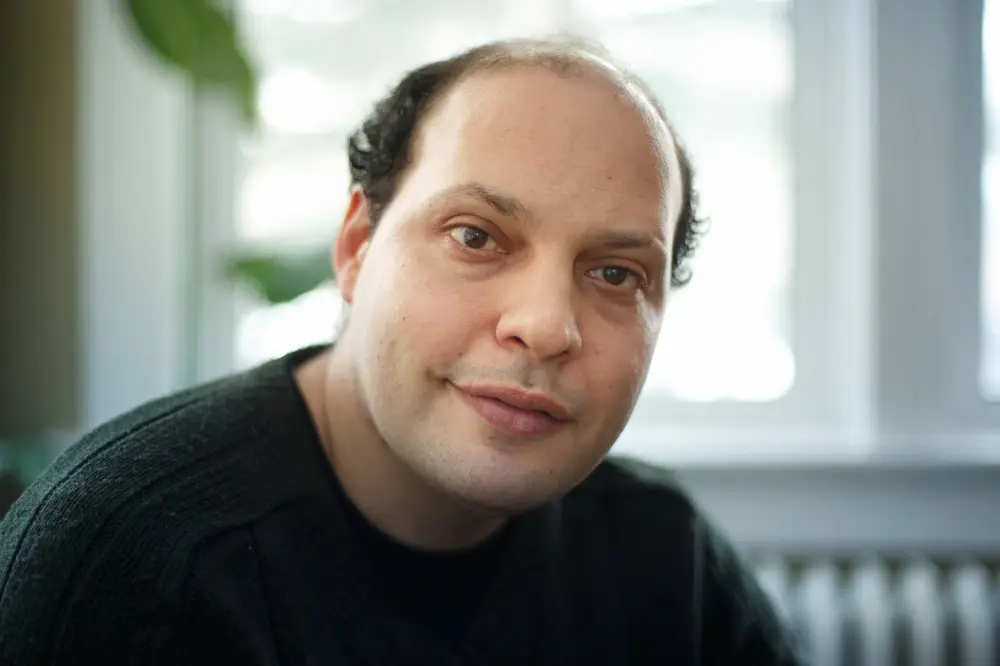
Nerohilarity Exposed
Produced by Adam Schwartz
We all sometimes feel exposed, whether that’s as a fraud or a pretender.
The performers of the award-winning Neurohilarity show, Danielle Kayahara (Laugh Out Loud CBC), Carole Cunningham (Yuk Yuks, The Debaters), Adam Schwartz (Winnipeg Fringe) and Rollin Penner (Yuk Yuks, CBC, Rumors, Winnipeg Comedy Festival), apply a comedic spin to the experiences that make us feel insecure, stripping away the emotional weight with nittygritty jokes and stories that will have you laughing uproariously.
Brilliantly awkward.
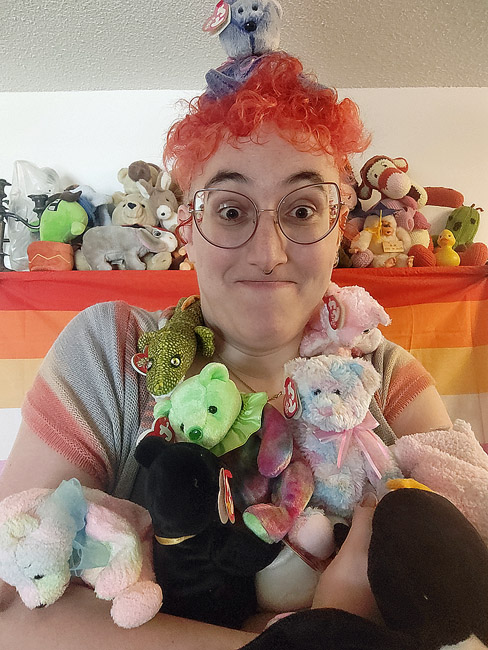
A Lesbian in the Kitchen
Willow Rosenberg
Professional lesbian Willow Rosenberg takes you on a journey through the centuries, superstitions and tablespoons of her lifelong passion for baking in this spiritual successor to 2024’s Jenny Award-nominated A Lesbian in a Bear Store.
Whether you have a favourite spatula, bake once or twice a year, or live in constant fear of being told to “just fold it in”, this one-woman show about family, joy, tradition (but make it gay),
Judaism, comfort, home (but make it gayer*), love, chemistry and magic is for you!
*Who’re we kidding, it’s all gay!

Eleanor’s Story: An American Girl in Hitler’s Germany
Written & Performed by Ingrid Garner
(Ed. note: Although Ingrid Garner isn’t Jewish, we thought the theme of this show might have a special appeal for Jewish readers.)
Based on Eleanor Ramrath Garner’s best-selling memoir, this 16x internationally award-winning adaptation – performed by her granddaughter, Ingrid Garner – details Eleanor’s youth as an American caught in Second World War Berlin.
Punctuated with humour and accompanied by cinematic sound and video, Garner embodies her ancestors in this coming-of-age odyssey, delivering an account of war that is more relevant than ever.

Reviewing The Free Press 2
Benji Rothman
The Winnipeg Free Press has run amok, reviewing each and every Fringe show over the past two decades without consequence or recourse. Now, it’s their turn… again.
In this refurbished work that debuted at last year’s Winnipeg Fringe, Benji Rothman once again takes the Winnipeg Free Press to task. In this (mostly) new, (hopefully) hilarious 45-minute show, Rothman dives deep into their past and exposes their faulty journalism, imbalanced reporting and, of course, embarrassing typos.
